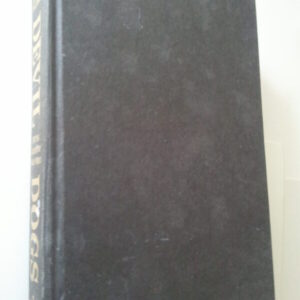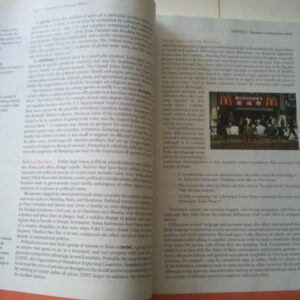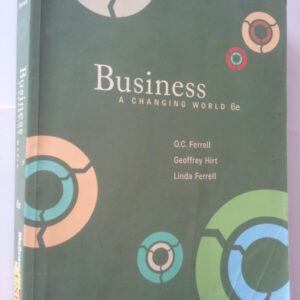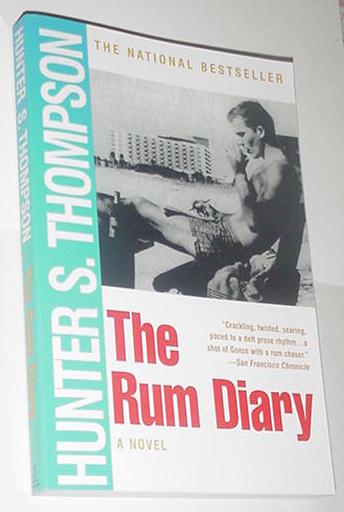Description
Rum Diary SC Hunter S. Thompson Movie based on this! Begun in 1959 by a twenty-two-year-old Hunter S. Thompson, The Rum Diary is a brilliantly tangled love story of jealousy, treachery, and violent alcoholic lust in the Caribbean boomtown that was San Juan, Puerto Rico, in the late 1950s. The narrator, freelance journalist Paul Kemp, irresistibly drawn to a sexy, mysterious woman, is soon thrust into a world where corruption and get-rich-quick schemes rule and anything (including murder) is permissible. Exuberant and mad, youthful and energetic, this dazzling comedic romp provides a fictional excursion as riveting and outrageous as Thompson’s Fear and Loathing books. “Disgusting as he usually was,” Hunter Thompson writes in this, his 1959 novel, “on rare occasions he showed flashes of a stagnant intelligence. But his brain was so rotted with drink and dissolute living that whenever he put it to work it behaved like an old engine that had gone haywire from being dipped in lard.” Surprise! Thompson isn’t writing about himself, but one of the other, older, aimlessly carousing newspapermen in Puerto Rico, a guy called Moberg whose chief achievement is the ability to find his car after a night’s drinking because it stinks so much. (I can smell it for blocks, he boasts.) The autobiographical hero, Paul Kemp, is 30, trapped in a dead-end job (Thompson wound up writing for a bowling magazine), and feeling as if his big-time writer dreams, soaked in Fitzgerald and Hemingway, are evaporating as rapidly as the rum in his fist. In fact, Thompson was only 22 when he wrote The Rum Diary, but his fear of winding up like Moberg was well founded. What saved him was the fantastic conflagration of the 1960s, a fiery wind on which the reptilian wings of his prose style could catch and soar to the cackling heights of Fear and Loathing in Las Vegas. Puerto Rico in 1959 doesn’t have bad craziness enough to offer Thompson–just a routine drunken-reporter stomping by local cops and a riot over Kemp’s friend’s temptress girlfriend, a scantily imagined Smith College alumna who likes to strip nude on beaches and in nightclubs to taunt men. Thompson’s prose style only intermittently takes tentative flight–compare the stomping scenes in this book with his breakthrough, Hell’s Angels–but it’s interesting to see him so nakedly reveal his sensitive innards, before the celebrated clownish carapace grew in. It’s also interesting to see how he improved this full version of the novel from the more raw (and racist) excerpts found in the 1990 collection Songs of the Doomed. When the celebrated iconoclast was a feisty kid working for an English-language newspaper in San Juan 40 years ago, he wrote, and then put aside, a novel, which is here resurrected. It is very much a young man’s book, clearly based on Thompson’s own situation and some of the peopleAmostly drunks and layaboutsAwho gravitated to a loosely supervised journalistic stint in the tropics. An introduction sets the scene, and the novel that follows is almost equally documentary in tone: young Kemp comes aboard at the News, gets to know its perpetually embattled proprietor and some of his feckless staff. He observes the island, as the invasion of American tourists and values is just beginning to change its lazy, sun-struck character. He gets involved in a drunken fight with the police, is thrown in jail, bailed out and goes in for a little shame-faced PR writing. He comes between a wild colleague and the equally unbuttoned young Connecticut girl he has brought out to visit him, and the end is a youth’s easy-won nostalgia for a silly, drunken time. As he always has done, Thompson lays on the drinking and general hell-raising very thick (the amount of rum consumed would dry up a distillery) and indulges flashes of bad temper toward commercialism while always showing a willingness to do whatever it takes to make a buck. His style is less hallucinatory and exclamatory than it later became, but the groundwork is there. The best parts of the book are its occasional, almost grudging, acknowledgments of natural beauty; the people in it are no more than props. ISBN 0-684-85647-6.
Minor wear.
Related products
-


Norton Anthology American Literature 7th Edition SC Edgar Allan Poe Herman Melville
$49.99 Add to cart -


Elvis SC by Dave Marsh Thunder’s Mouth Press NM Condition
$49.99 Add to cart -


Devil Dogs HC Fighting Marines of WWI George B Clark Presidio 1999
$39.99 Add to cart -


Business A Changing World 6E SC Ferrell Hirt McGraw Hill
$49.99 Add to cart
